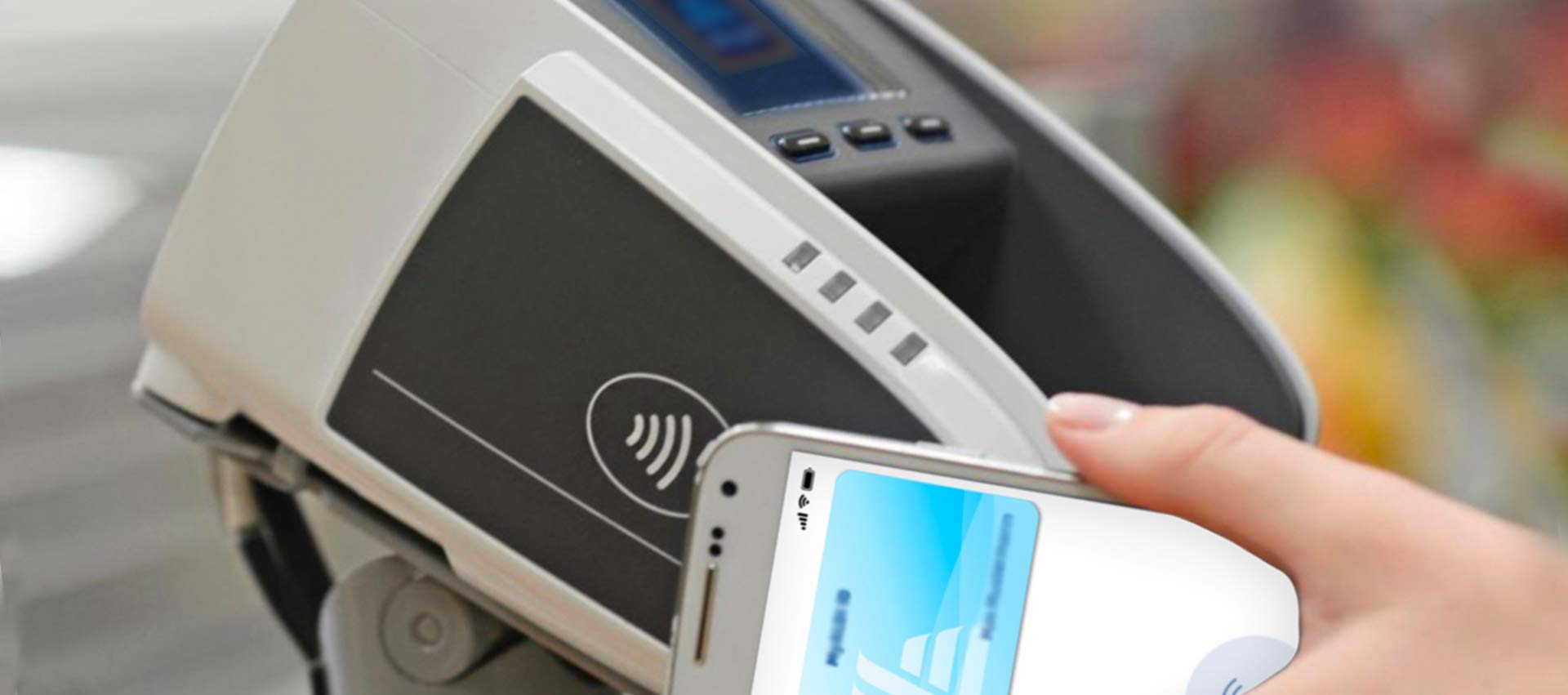
Task: Allow customers to redeem vouchers
These redemption schemes are nothing new but how can we enhance this process to either leverage new techniques such as NFC or mobile-wallets or make it so that the cusotmer doesn't even have to take there phone out of there pocket.
Key Focus: Account and In-store redemption
We don't want the customers to have to input any new information so leveraging the current account structure to do all the heavy lifting is a must. Attaching a 'marker' on the customer and associating the various coupons they may or may not have activated to them rather than something as crude as a QR code linked to an 'identifyer' could be a good direction. But first lets ask the customer if they would even want to use something like this or if the uncomplicated nature of our current system is the reason they come back?
Pre-sprint: What makes them loyal?
A huge customer base and hundred of thousands in foot-fall each day makes for a target rich environment. Being able to reach out to just a fraction of these would provide huge insite as to what would be the main focus.
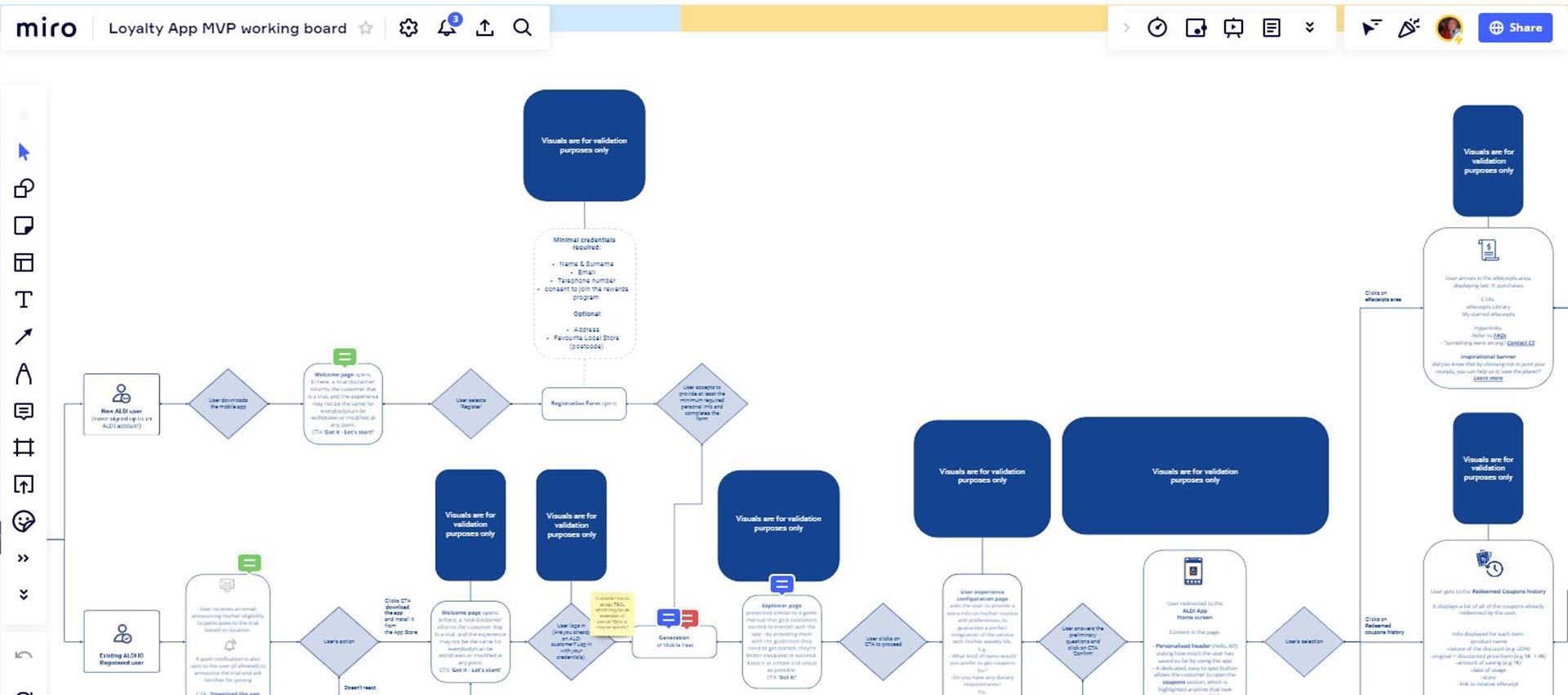
Journey mapping
Having an initial idea of how the service would work with or without account support would be very useful for gaining confidence in additonal spending and scope. By combining the user research with the key steps in the journeys will help flesh out the bigger picture for the stakeholders and supporting teams. The more confidence we can build into the story the better.
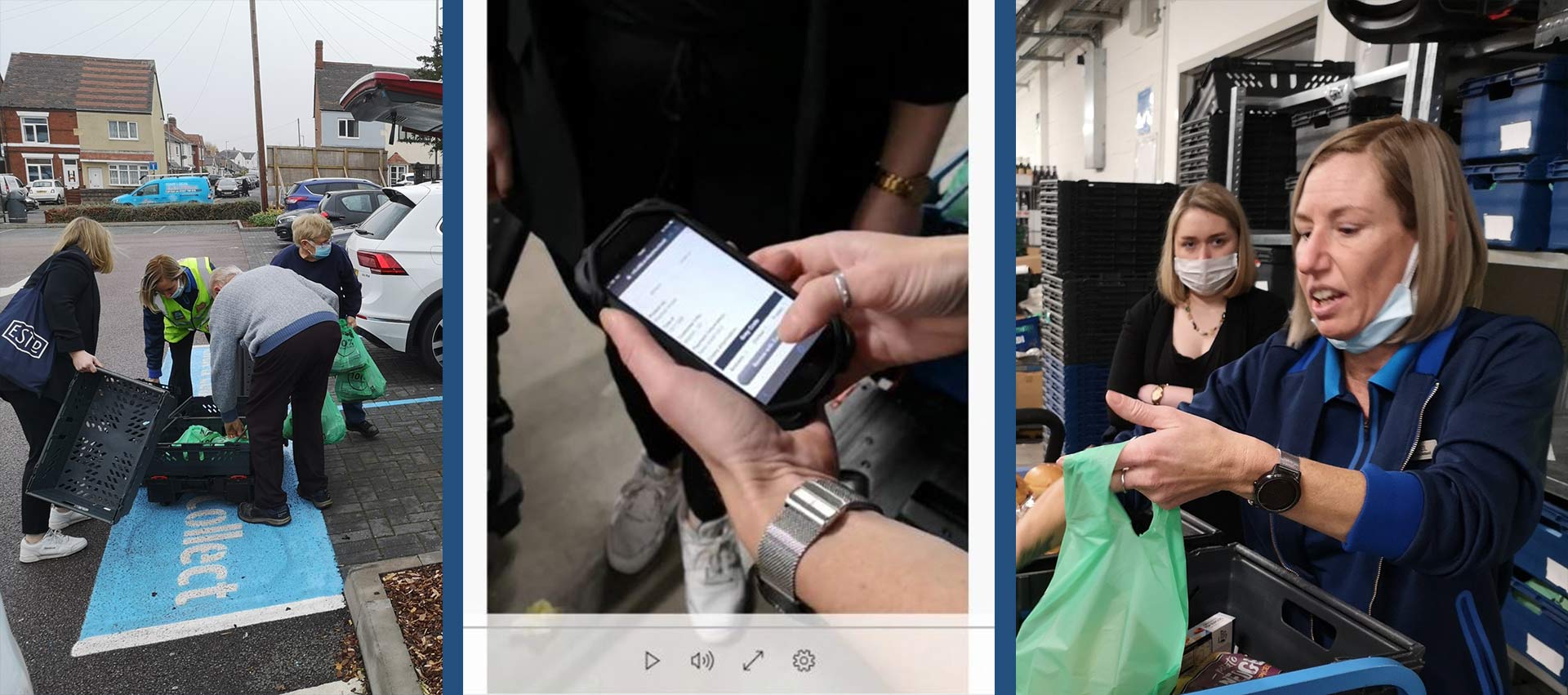
Discovery: Understanding
The starting point is really 'What is loyalty?'. Its a very big and very difficult question to answer but will basically allow us to discount the current direction that has been proposed. We don't want to build something for the sake of it so its our job to understand what a better course of action could be and use evidence to support it. So using our responses from the customers contextual question, we can start our discovery process.
We have to be very careful how we synthersise our answers becuase if you ask someone if they want money off something they will always say yes.
Note: At this point we can dedicate energy to understanding the bigger question of loyalty and bake some of this infromation into an over arching strategy document to help support future projects
Who's involved?
Design, User researchers, Developers, Key Stakeholders and directly affected teams are represented.
PO for reference
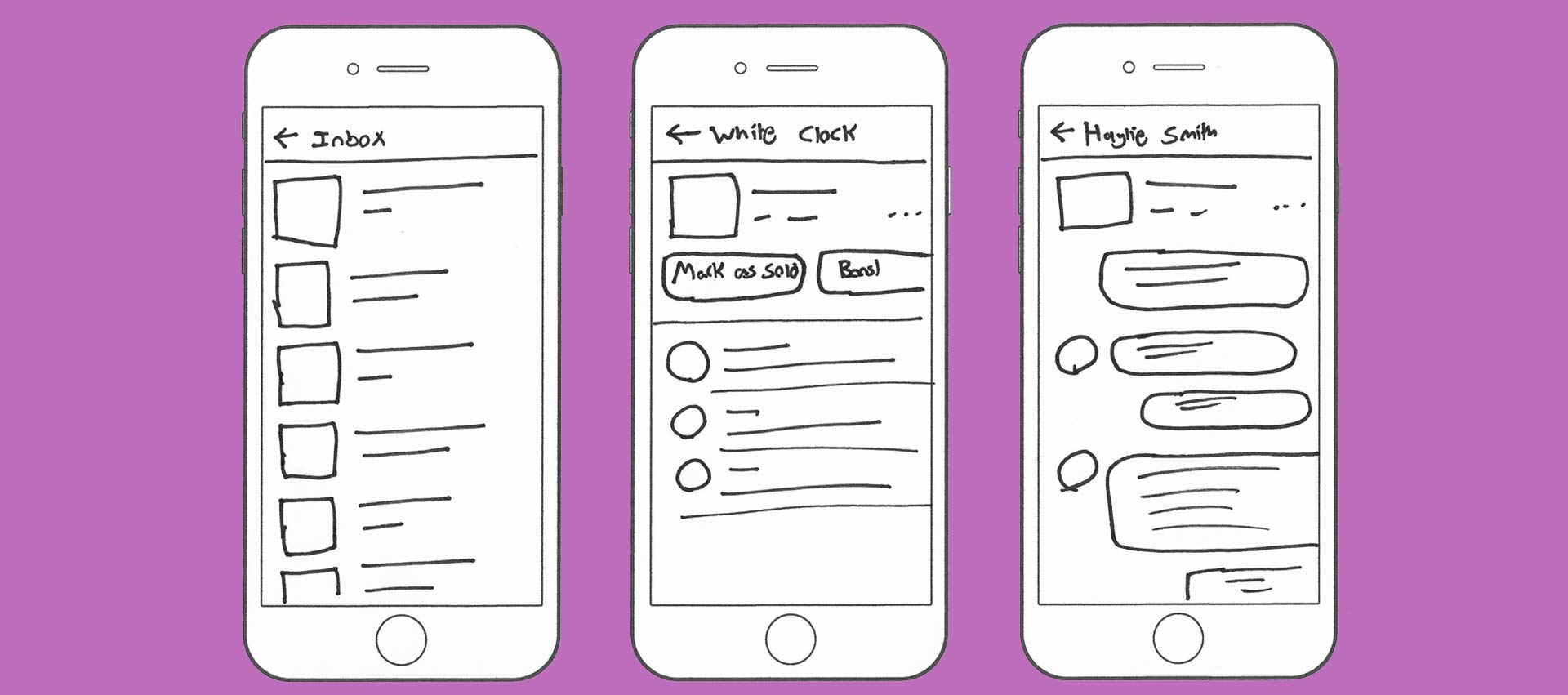
Define: Planning our direction
Having built out our understanding of the best way to tackle the process and developing an idea of what good looks like we can begin to plan how to attack what we currently have and turn it into something better. Benchmarking, comparisons and the culmination of ideas are all used to explain viewpoints and understand directions. Early stage lo fi flows can be made to help understand the work visually and story boards to better understadn how it impacts the customer journey
Who's involved?
Design, Developers, Key Stakeholders and directly affected teams are represented. Same as day 1
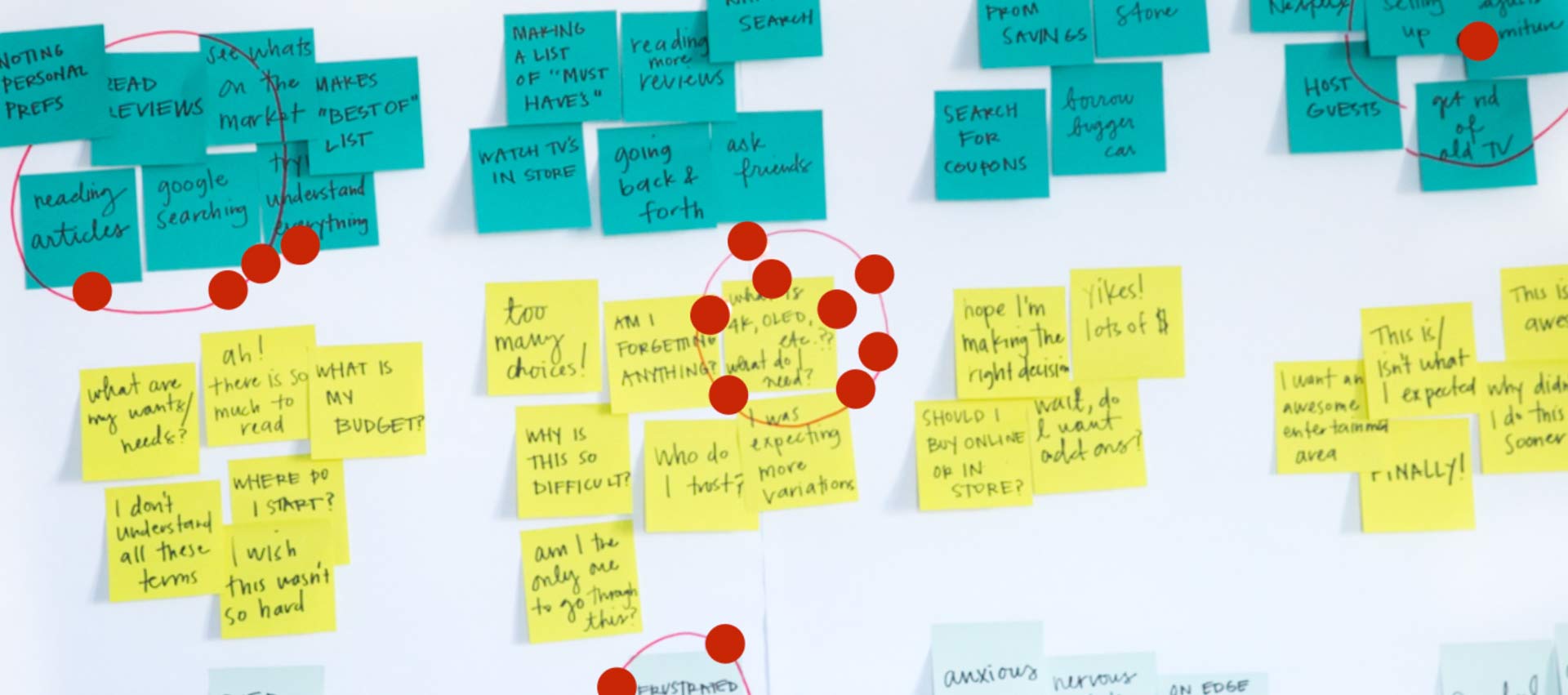
Development: Refinement and voting
Now we have a finer focus on our direction and also have a second project in the loyalty strategy to support. We can vote and replay back to our stakeholders our collective response to the question 'how might we reward our customers'. This time, rather than it be purely based on a strategy, it will be based on our understanding of the customer response and current social impacts.
Note: This is unique to this project as the initial phases were presented as a 'pre-agreed concept'. Our job is to interrogate it and present a more refined option.
Who's involved?
Design, Developers, Key Stakeholders and directly affected teams are represented. Same as day 1&2
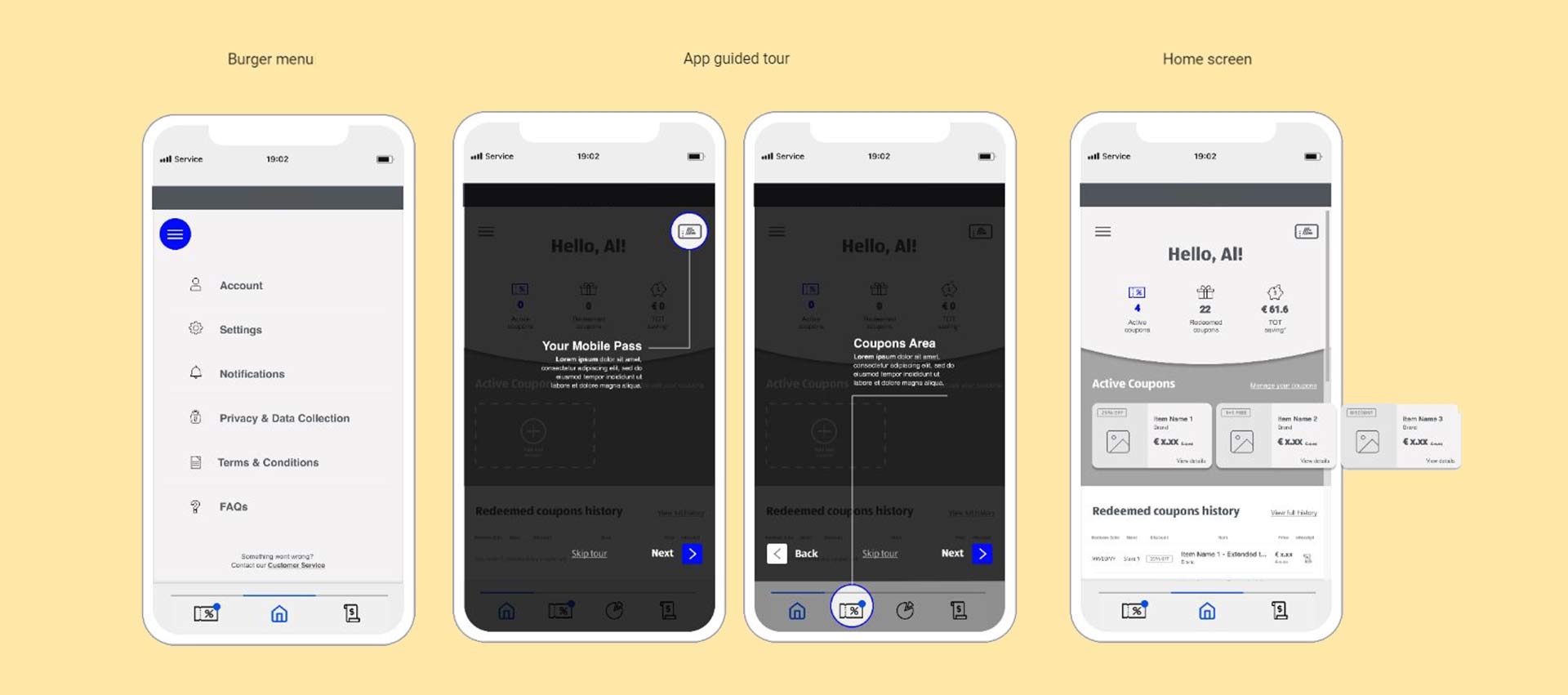
Deliver: Test and learn
Design would take the lead in the development of a prototype(s) of the flows we would like to do along with the our floating team of specialist to keep us honets and review the product as we go along. This way there confidence can grow as our product becomes real. New test candidate would be selected to see if they had similar factors and influences that drove the answers to the initial in-store research.
Who's involved?
Design, PO, Key Stakeholders and directly affected teams are represented (to review only)
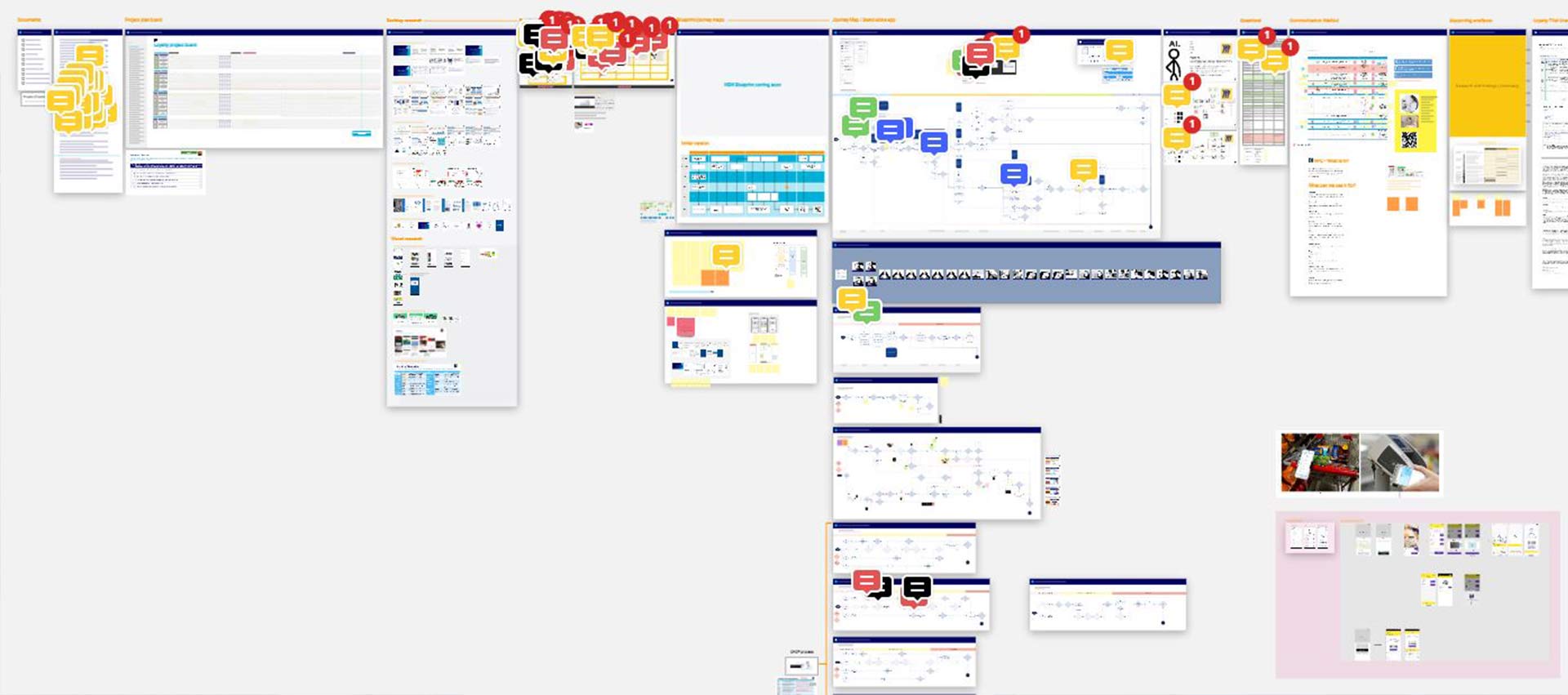
Our entire journey is available on a board to talk any stakeholders through and 'tell the story'
Review: Synthesis of feedback
The prototype test group would help shape the interactions and placement of elements. Following a set of brief test journeys, we can ascertain how intuative the project is and how much supporting items we may need such as on boarding, Point of sale etc.
So what happens if the customer research comes back negative?
The project hinges on its ability to resinate with the customer. If this was a difficult proposition at the early test stages we can always pivot the project to better fit the usage of the customer. Ultimately this is a much needed tool for learning customer shopping habits so those learnings sit higher in our priority list.
Will we learn it all at the test and learn stage?
Yes, well most of it. No current project exists on this nature in the product suite so all learnings at this early stage are gold. Once the product is up and running we will just get better and better.
Who's involved?
Developer, Design, Key Stakeholders and directly affected teams are represented (to review only)